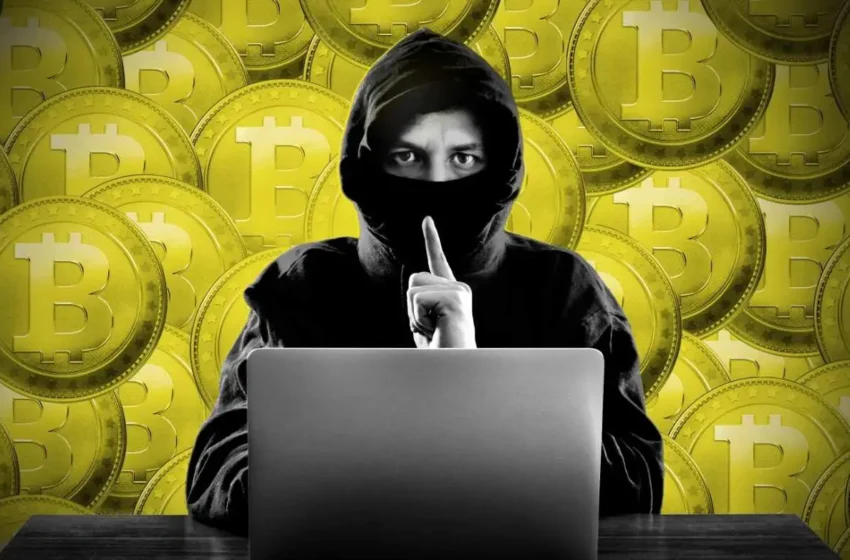Qzino: Innovative iGaming Platform With AI and Profit Sharing Launches
Blockchain Crimes Surge as Crypto Thefts Hit $19 Billion Since 2011
(Originally posted on : Crypto News – iGaming.org )
Cryptocurrency thefts have soared, with nearly $19 billion stolen since 2011. Crystal Intelligence’s recent report highlights this alarming trend, revealing 785 incidents of crypto-related crime. These include 220 security breaches, 345 decentralized finance (DeFi) hacks, and 220 fraud schemes.
The most significant theft occurred in 2019, involving the Plus Token Ponzi scheme, where $2.9 billion was stolen. Since then, the frequency of crypto crimes has only increased. In 2023 alone, there were 286 incidents, totaling over $2.3 billion in stolen assets.
Crystal Intelligence notes, “Even with improved and enhanced monitoring and reporting mechanisms, illegal activity on the blockchain has continued to grow.” This highlights the persistent challenge in securing blockchain technologies despite advancements in security measures.
Ethereum and Binance Smart Chain
Over the past two years, Ethereum has emerged as the primary target for cybercriminals. The report documents 131 incidents involving Ethereum, amounting to nearly $1.3 billion in losses. Following closely is the Binance Smart Chain (BSC), which has been targeted 100 times, resulting in losses exceeding $186 million.
These figures reflect the vulnerabilities in popular blockchain platforms. The growing use of DeFi platforms, which often operate with less oversight than traditional financial systems, has made them attractive targets for hackers.
New players only. 250% on 1st Deposit + $125 Free Chip
The report covers incidents up until March 2024, but the trend continues. In a recent event, Japanese crypto exchange DMM Bitcoin was hacked for $320 million. In response, the company announced plans to raise capital to compensate affected users, demonstrating a commitment to protecting their customer base despite the significant setback.
The industry is at a crossroads, grappling with the dual challenges of fostering innovation and enhancing security. As blockchain technology evolves, so do the tactics of cybercriminals. Therefore, continuous improvement in security protocols is crucial to protect digital assets.







 Bitcoin
Bitcoin  Ethereum
Ethereum  Tether
Tether  XRP
XRP  Solana
Solana  USDC
USDC  TRON
TRON  Dogecoin
Dogecoin  Lido Staked Ether
Lido Staked Ether  Cardano
Cardano  Wrapped Bitcoin
Wrapped Bitcoin  Hyperliquid
Hyperliquid  Wrapped stETH
Wrapped stETH  Bitcoin Cash
Bitcoin Cash  Sui
Sui  Chainlink
Chainlink  LEO Token
LEO Token  Avalanche
Avalanche  Stellar
Stellar  USDS
USDS  Toncoin
Toncoin  WhiteBIT Coin
WhiteBIT Coin  Shiba Inu
Shiba Inu  WETH
WETH  Litecoin
Litecoin  Wrapped eETH
Wrapped eETH  Binance Bridged USDT (BNB Smart Chain)
Binance Bridged USDT (BNB Smart Chain)  Hedera
Hedera  Monero
Monero  Bitget Token
Bitget Token  Ethena USDe
Ethena USDe  Polkadot
Polkadot  Coinbase Wrapped BTC
Coinbase Wrapped BTC  Pi Network
Pi Network  Uniswap
Uniswap  Aave
Aave  Pepe
Pepe  Dai
Dai  Aptos
Aptos  Ethena Staked USDe
Ethena Staked USDe  OKB
OKB  BlackRock USD Institutional Digital Liquidity Fund
BlackRock USD Institutional Digital Liquidity Fund  Bittensor
Bittensor  NEAR Protocol
NEAR Protocol  Jito Staked SOL
Jito Staked SOL  Internet Computer
Internet Computer  Cronos
Cronos  Ethereum Classic
Ethereum Classic  sUSDS
sUSDS  Ondo
Ondo  Tokenize Xchange
Tokenize Xchange  USD1
USD1  Mantle
Mantle  Gate
Gate  Cosmos Hub
Cosmos Hub  Official Trump
Official Trump  VeChain
VeChain  Lombard Staked BTC
Lombard Staked BTC  Artificial Superintelligence Alliance
Artificial Superintelligence Alliance  Sky
Sky  Sei
Sei  Render
Render  POL (ex-MATIC)
POL (ex-MATIC)  Ethena
Ethena  Arbitrum
Arbitrum  Algorand
Algorand  Filecoin
Filecoin  Jupiter Perpetuals Liquidity Provider Token
Jupiter Perpetuals Liquidity Provider Token  Binance-Peg WETH
Binance-Peg WETH  USDtb
USDtb  Worldcoin
Worldcoin  KuCoin
KuCoin  Binance Staked SOL
Binance Staked SOL  USDT0
USDT0  Jupiter
Jupiter  NEXO
NEXO  Rocket Pool ETH
Rocket Pool ETH  SPX6900
SPX6900  Injective
Injective  Polygon Bridged USDT (Polygon)
Polygon Bridged USDT (Polygon)  Bonk
Bonk  Kaia
Kaia  Stacks
Stacks  Binance Bridged USDC (BNB Smart Chain)
Binance Bridged USDC (BNB Smart Chain)  Fartcoin
Fartcoin  Celestia
Celestia  Sonic
Sonic  PayPal USD
PayPal USD  Virtuals Protocol
Virtuals Protocol  Optimism
Optimism  Mantle Staked Ether
Mantle Staked Ether  StakeWise Staked ETH
StakeWise Staked ETH  Solv Protocol BTC
Solv Protocol BTC